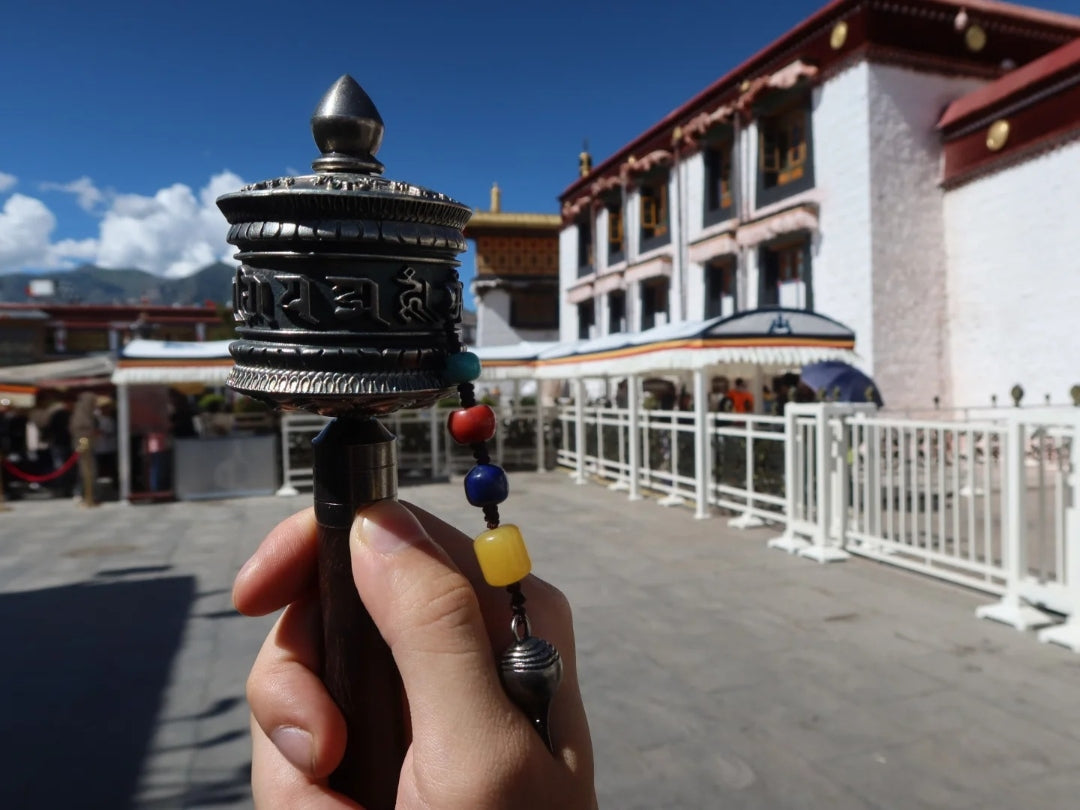Creating a small Tibetan home altar is a quiet way to bring intentionality, calm, and cultural reverence into your everyday life. For many practitioners and culture-curious people alike, a gawu box (a portable shrine that holds sacred images or mantras) becomes the heart of that altar. This guide explains respectful placement, simple offerings, care for Thangka pendants and amulets, and polite visitor etiquette—so your altar honors tradition rather than becoming a decorative afterthought.
What is a gawu box and why it matters
A gawu (sometimes spelled gau or ga wu) is a small, often rectangular shrine box used throughout the Himalayas to protect and carry sacred objects—miniature Thangka paintings, mantras, relics, or a small statue. Beyond practical protection, a gawu functions as a portable sanctuary: it marks a focused place for prayer, meditation, and dedication. When you set up a Tibetan home altar, the gawu typically occupies the most honored position.
Choosing the right spot: altar placement basics
How you set up your altar matters less than the intention behind it, but there are traditional guidelines you can follow to show respect:
-
Elevation: Place the altar at chest or eye height when seated—higher than everyday furniture but not necessarily high on a mantel. This honors the sacred objects without making them unreachable.
-
Clean, quiet corner: Choose a calm, clutter-free area with limited foot traffic. A bedroom corner, dedicated shelf, or a small table near a window are common choices.
-
Facing direction: If you follow classic guidance, facing east or east-southeast is traditional because it aligns with sunrise and symbolism of awakening; that said, practicality and household layout take precedence.
-
Separate from daily mess: Avoid setting the altar near trash cans, shoes, or workspaces—keep it visually and energetically distinct.

What to place on a simple Tibetan home altar
Start small and keep things meaningful. Here are common elements and what they represent:
-
Gawu box: The centerpiece—open it when practicing, close it afterward to protect the image or mantra.
-
Thangka pendant or small statue: A hand-painted miniature Thangka or a small Buddha/Deity image—placed inside the gawu or on the altar surface.
-
Offering bowl: A single small bowl can hold water (symbolizes generosity and purity). Traditional altars have multiple bowls for water, flowers, incense, light, food, and perfume; a single bowl is fine for beginners.
-
Light: A tea light or butter lamp (battery-operated for safety) symbolizes dispelling ignorance.
-
Incense or smudge: A stick of Tibetan incense or simple sage for brief, respectful offerings—avoid heavy perfumed candles that overwhelm.
-
Mala or small bell: Keep a mala for short practices and a bell for ritual sound if you use them.
-
Clean cloth or silk scarf (khatag): A plain cloth under the gawu keeps the altar tidy and marks it as intentional.
Aim to keep offerings simple and fresh. Rotating flowers or a clean bowl of water once a day keeps the altar cared for.
Caring for Thangka pendants, amulets, and the gawu
These items are often delicate—especially hand-painted Thangkas or antique amulets—so treat them with physical care and ritual respect.
-
Handle with clean hands: Oils and lotions dull pigments and metal finishes. Wash and dry hands before touching sacred pieces.
-
Dust gently: Use a soft, dry brush for Thangka surfaces and a clean microfiber for metalwork. Avoid water on painted surfaces.
-
Protect from moisture and sunlight: Direct sunlight fades pigments; humidity warps paper and canvas. Keep the gawu closed when not in use.
-
Storage: If you store a Thangka pendant, wrap it in clean, breathable fabric (cotton or silk) and place it inside the gawu or a padded box.
-
Respect restoration: If a treasured piece needs repair, consult conservators who specialize in Asian art—don’t attempt DIY restoration on fragile Thangka paint or gilt work.
Offerings and simple practices (for everyday use)
You don’t need elaborate rituals—small, sustained gestures are powerful.
-
Three-breath grounding: Touch your pendant, take three mindful breaths, and dedicate the practice.
-
Water offering: Fill one small bowl with fresh water each morning and replace it daily.
-
Light: Light a candle or lamp for a few minutes as a daily symbol of clarity. Battery lamps are a safe, low-maintenance option.
-
Mantra rounds: Use a short mantra (e.g., Om Mani Padme Hum) on a mala for five minutes, or spin a small prayer wheel if you have one.
Visitor etiquette: how to behave around a home altar
If friends or family visit and notice your altar, a few gentle customs help maintain respect:
-
Explain briefly: If someone asks, offer a concise description: “This is my small Tibetan altar where I practice a few minutes daily.”
-
Ask before touching: Inviting someone to touch or hold an object is generous—never assume permission.
-
Shoes and posture: In many traditions, removing shoes before entering a sacred corner is courteous; you can set a small mat if you prefer guests to do so.
-
No selfies on the altar: Advise politely that photos posing with sacred objects are best avoided—ask before sharing images online.

Respect over display
The key difference between a shrine and a stage is intention. An altar is not a decorative showcase; it’s a place for regular, thoughtful practice and reverence. Keep the arrangement purposeful, protect fragile pieces, and let the altar inform daily life with quiet steady reminders of generosity, compassion, and presence.
If you’d like, I can draft a printable checklist for setting up your first gawu altar (materials, step-by-step placement, daily care routine) tailored to small apartments or shared homes.
emily@qilingaura.com





